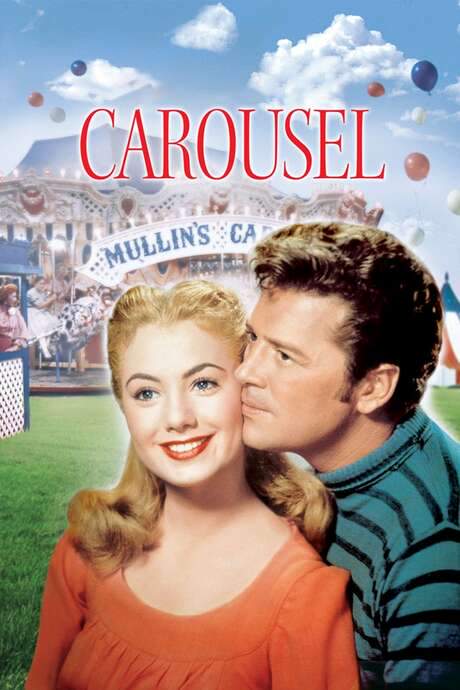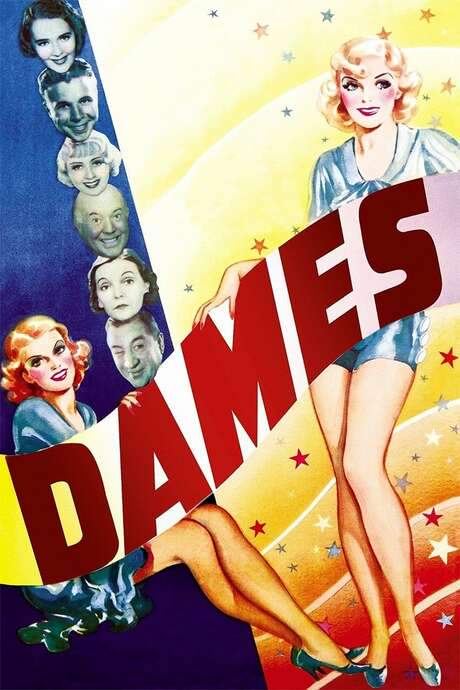
It’s Always Fair Weather
Year: 1955
Runtime: 102 mins
Language: English
Director: Stanley Donen
A grand, uplifting musical follows three World II friends who vow to reunite a decade after the war at a set place and time. When they finally meet, they discover how far apart their lives have drifted. The reunion awakens long‑cherished dreams, prompting them to reassess their choices and strive to rebuild their friendship.
Warning: spoilers below!
Haven’t seen It’s Always Fair Weather yet? This summary contains major spoilers. Bookmark the page, watch the movie, and come back for the full breakdown. If you're ready, scroll on and relive the story!
It’s Always Fair Weather (1955) – Full Plot Summary & Ending Explained
Read the complete plot breakdown of It’s Always Fair Weather (1955), including all key story events, major twists, and the ending explained in detail. Discover what really happened—and what it all means.
Three ex-G.I.s, Ted Riley [Gene Kelly], Doug Hallerton [Dan Dailey], and Angie Valentine [Michael Kidd], who fought side by side in World War II and formed a deep, lifelong bond, narrate a story of friendship tested by time. In October 1945, the trio gathers at their favorite New York bar, Tim’s Bar & Grill, just as they’re about to be discharged. Ted receives a Dear John letter from his girlfriend, who has married another man, and his two friends rally around him, joining in a spirited—if reckless—tour of every other bar in town. They whirl through the streets in a drunken celebration they nickname The Binge, eventually returning to the warmth of Tim’s. The bartender, Tim, looks on with hesitation, doubting whether their fierce promises of eternal friendship can withstand the hardening years ahead, and he wagers that their bond will fray. Nonetheless, the three men insist they’ll remain inseparable, tearing a dollar bill into three pieces and inscribing the date October 11, 1955 on each fragment as a vow to reunite a decade later in the same spot.
Over the next decade, life diverges for each man, revealing how differently postwar dreams can take shape. Ted Riley [Gene Kelly] pursues the flashier world of boxing, becoming a fight promoter and gambler who moves in circles shadowed by risk and corruption. His romantic ideals are tempered by the gritty realities of his environment, and he finds himself entangled with men who operate in the shadows of the sport he loves. Doug Hallerton [Dan Dailey], who once hoped to paint in Europe, instead dives into the pressurized, high-stakes realm of Chicago advertising. The pace and pressure strain his marriage and test his sense of purpose. Angie Valentine [Michael Kidd], who once dreamed of becoming a gourmet chef, ends up running a hamburger stand in Schenectady, New York—The Cordon Bleu—where he balances business with family life and tries to keep alive a culinary passion that once burned brightly. Each man walks a path that reflects ambition, compromise, and the quiet ache of what could have been.
When the ten-year mark arrives, the reunion proves prickly more than consoling. They sit together in a fancy restaurant, only to discover that the bond that once felt unbreakable now feels awkward and strained. The gulf between them is voiced in unspoken judgments: Ted and Angie see Doug as a snob, Doug views Ted as a punk, and Ted and Angie regard Doug as overly uptight. The trio’s discomfort is punctuated by a personal catharsis as they quietly perform a shared moment of regret in the number I Shouldn’t Have Come, a slow, melancholy moment set to the waltz-like rhythm of The Blue Danube. The scene highlights how time can erode camaraderie even when memories remain intact.
Back in the broader orbit of the advertising world, they encounter colleagues from Doug’s agency, including Jackie Leighton [Cyd Charisse], a bright, alluring advertising executive who embodies a polished confidence and quick wit. Jackie becomes a catalyst for the group’s new dynamic when she conceives a plan to reunite them on a television program hosted by Madeline Bradville [Dolores Gray]. The collaboration is electric: Jackie’s savvy, Ted’s charisma, and the possibility of televised anointment breathe new life into an old camaraderie, and Ted gradually finds himself drawn to Jackie as he navigates the evolving landscape of fame and sport. Jackie’s presence also ignites the gym scenes, where she demonstrates boxing prowess and flirts with the world of beefy boxers in a lively sequence set to the playful energy of Baby You Knock Me Out.
Amid the glamour and potential romance, trouble looms for Ted in the form of mobsters who want the fixed outcomes they’ve long exploited. Refusing to participate in any crooked bout, Ted finds himself in danger, narrowly escaping the mob’s clutches by sprinting into a roller skating rink and skating through the bustling streets of Manhattan. In these moments of peril and exhilaration, Ted discovers a renewed sense of self-worth, a self-affirmation that radiates outward and fuels his return to the stage of life with a bit more courage, captured in the number I Like Myself.
Doug’s arc leans toward a quieter, more skeptical critique of corporate life. The tension between authenticity and professionalism weighs on him, complicating his relationships and testing the old bond with his friends. Angie, meanwhile, balances his family responsibilities with a rekindled ambition that still glows with the essence of his earlier dream—the culinary art that once defined him, reimagined within the realities of a bustling urban life.
The TV reunion finally comes to pass, and the three men—still with their old war-brother energy but now seasoned by failure and resilience—face a dangerous interruption: the gangsters close in, intent on silencing Ted. What follows is a chaotic, high-energy confrontation inside the studio where the trio must rely on their wits, teamwork, and street-smarts to outsmart the criminals. In a daring turn, they turn the fight into a televised confession, revealing the gangster boss’s wrongdoing in front of a live audience. The danger subsides as the police arrive, and the trio escapes, their bond momentarily proven to be as enduring as ever.
Back at Tim’s Bar & Grill, the men reexamine the dollar fragments they tore apart a decade earlier and choose to use the remnants to settle their last round of drinks, a symbolic gesture that cements the end of a chapter even as the friendship lingers in memory. Jackie returns to the room and shares a kiss with Ted, a quiet moment that hints at new possibilities while also acknowledging the distance that time has carved between their pasts. As the night draws to a close, the three old friends part ways once more, with no concrete plans for a future reunion, letting their individual lives move forward. The closing number, The Time for Parting, emphasizes the bittersweet truth that some songs end even when their melodies remain inside us, leaving behind a legacy of friendship tempered by experience and time.
Last Updated: October 09, 2025 at 09:31
Unlock the Full Story of It’s Always Fair Weather
Don't stop at just watching — explore It’s Always Fair Weather in full detail. From the complete plot summary and scene-by-scene timeline to character breakdowns, thematic analysis, and a deep dive into the ending — every page helps you truly understand what It’s Always Fair Weather is all about. Plus, discover what's next after the movie.
It’s Always Fair Weather Timeline
Track the full timeline of It’s Always Fair Weather with every major event arranged chronologically. Perfect for decoding non-linear storytelling, flashbacks, or parallel narratives with a clear scene-by-scene breakdown.

Similar Movies to It’s Always Fair Weather
Discover movies like It’s Always Fair Weather that share similar genres, themes, and storytelling elements. Whether you’re drawn to the atmosphere, character arcs, or plot structure, these curated recommendations will help you explore more films you’ll love.
Explore More About Movie It’s Always Fair Weather
It’s Always Fair Weather (1955) Scene-by-Scene Movie Timeline
It’s Always Fair Weather (1955) Movie Characters, Themes & Settings
It’s Always Fair Weather (1955) Spoiler-Free Summary & Key Flow
Movies Like It’s Always Fair Weather – Similar Titles You’ll Enjoy
Has Anybody Seen My Gal? (1952) Movie Recap & Themes
Look for the Silver Lining (1949) Detailed Story Recap
It Happened at the World’s Fair (1963) Ending Explained & Film Insights
You Were Never Lovelier (1942) Movie Recap & Themes
Lovely to Look At (1952) Plot Summary & Ending Explained
Stormy Weather (1943) Full Movie Breakdown
Carousel (1956) Detailed Story Recap
State Fair (1945) Movie Recap & Themes
Finian’s Rainbow (1968) Complete Plot Breakdown
The Time of Your Life (1948) Story Summary & Characters
It’s a Great Feeling (1949) Movie Recap & Themes
For Me and My Gal (1942) Movie Recap & Themes
Something to Sing About (1937) Complete Plot Breakdown
Dames (1934) Detailed Story Recap
Words and Music (1948) Ending Explained & Film Insights

















